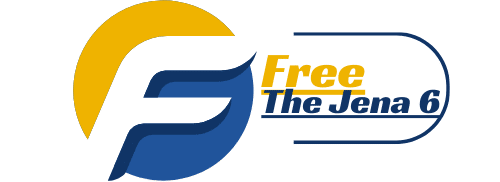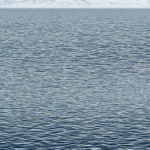As we all navigate the rapidly evolving world of the 21st century, the question of food security sits at the forefront of our collective consciousness. Global issues such as population growth, climate change, and economic disparity threaten the stability of our food supply. This reality demands innovative solutions. Thanks to the intersection of food, technology, and science, we’re witnessing an exciting era of innovation. Emerging tech solutions are stepping up to address these critical challenges and change the face of food production and agriculture.
Technology and Sustainable Agricultural Practices
The agricultural sector is experiencing a technological revolution. Farmers, once reliant on traditional methods, are now incorporating advanced technologies into their daily operations. Technology has become a lifeline for those who feed the world, offering solutions that make farming more sustainable and productive.
Sujet a lire : How Are Autonomous Systems Being Integrated into Public Service and Infrastructure Maintenance?
For example, precision agriculture uses data to optimize crop yields and soil health. Farmers deploy drones for aerial surveys, use GPS for accurate planting, and apply smart irrigation systems to conserve water. These technologies provide farmers with real-time data, enabling them to make informed decisions and reduce wastage.
On a global scale, precision agriculture can significantly improve food production. Imagine the impact if every farmer across the globe had access to these technologies. The potential to increase crop yields, reduce environmental impact, and ensure a more sustainable future for agriculture is enormous.
A lire également : What Is the Potential of AI in Enhancing Film and Video Production Techniques?
Data Science and Food Security
In the quest for global food security, data has become an invaluable tool. With data science, we can understand patterns, analyze trends, and make projections about future food supply and demand.
Predictive analytics, a branch of data science, is particularly promising. It uses statistical algorithms and machine learning techniques to predict future outcomes. In agriculture, predictive analytics can forecast crop yields, predict the spread of pests or diseases, and offer insights into climate patterns.
For instance, agtech company aWhere uses predictive analytics to provide farmers with weather forecasts, pest outbreak alerts, and crop health assessments. This assists farmers in making proactive decisions, improves crop health, and ensures consistent food production.
The Role of AI and Machine Learning in Food Production
AI and machine learning have become game-changers in the agriculture sector. These technologies are revolutionizing how we think about and approach food production.
Take, for example, the use of AI in automated farming. Robotic harvesters, guided by AI, can pick fruits and vegetables, alleviating labor shortages and reducing human contact with produce. This technology can increase efficiency, reduce costs, and ensure that fresh produce reaches consumers more quickly.
Machine learning, a subset of AI, offers further potential. By analyzing data from various sources, machine learning algorithms can predict optimal planting times, identify disease in crops, and even determine the best genetic traits for crop breeding. These advanced capabilities can significantly improve food production and contribute to global food security.
Tech Innovations in Food Supply Chain
Another area where technology is making a significant impact is the food supply chain. From farm to fork, technologies such as blockchain, IoT (Internet of Things), and AI are transforming the way food is processed, transported, and consumed.
Blockchain technology can increase transparency and traceability in the food supply chain. Every transaction or movement of goods is recorded in a decentralized ledger, offering an immutable record of a product’s journey. This technology can help identify and address issues like food fraud, mislabeling, and wastage.
Similarly, IoT can monitor food quality and safety during transportation. Sensors and smart devices can track temperature, humidity, and other conditions, alerting stakeholders if the parameters deviate from the set standards. This prevents spoilage, ensuring that safe and quality food reaches the consumers.
The Future of Food Security with Technology
As we continue to grapple with global food security issues, it’s clear that emerging technologies hold the key to the future of food production and agriculture. It’s a future where technology will not only increase productivity, but also enable a shift towards more sustainable and resilient food systems.
The fusion of tech and agriculture is already underway, and the benefits are clear. However, the journey doesn’t end here. As the technologies evolve, we’ll continue to see new solutions that will further revolutionize this sector and solidify food security for all.
It’s an exciting time, and we’re all part of this global movement. After all, food security isn’t just about producing enough food; it’s about ensuring everyone has access to that food. And with technology leading the way, we’re well on our path to achieving this.
The Impact of Vertical Farming and Aquaponics on Food Production
Vertical farming and aquaponics are two innovative agricultural practices that are revolutionizing the way we produce food. These technologies enable us to grow food in places where traditional farming is not possible, such as urban areas or regions with poor soil quality. They represent a significant breakthrough for food security and sustainable food systems.
A vertical farm is a method of growing crops in vertically stacked layers, typically in a controlled environment. It allows for year-round crop production, significantly increases productivity per square foot, and reduces the need for water and pesticides. This farming method can be utilized in urban areas, reducing the distance food needs to travel and therefore decreasing greenhouse gas emissions associated with food transportation.
Aquaponics, on the other hand, is a farming system that combines aquaculture (raising fish) with hydroponics (cultivating plants in water) in a symbiotic environment. This method recycles the waste produced by fish to serve as a natural fertilizer for the plants, which in turn purify the water for the fish. Aquaponics systems can be set up anywhere and require significantly less water than traditional farming. They are a promising solution for developing countries where access to water and fertile land can be limited.
Incorporating vertical farming and aquaponics into our future food systems could be a key strategy for addressing food insecurity in the face of rapid urbanization and climate change.
Technology and Food Waste Reduction
Food waste is another pressing global issue that technology is positioned to address. Each year, approximately one-third of the food produced worldwide – about 1.3 billion tons – gets lost or wasted, according to the Food and Agriculture Organization of the United Nations. This loss not only represents a missed opportunity to feed people in need but also contributes to climate change by producing unnecessary greenhouse gas emissions.
Emerging technology innovations are helping to combat this issue. For instance, smart packaging technology is being developed that can monitor and communicate the freshness of food, reducing waste due to spoilage. Apps are also emerging that connect consumers to surplus food from restaurants, farms, and grocery stores that would otherwise go to waste.
Additionally, solutions like biogas plants are making it possible to turn food waste into renewable energy. In the European Union and the United States, there are already initiatives in place encouraging the use of food waste for the production of bioenergy.
The integration of these technologies into our food systems offers great potential not only to reduce food waste but also to mitigate the environmental impact of food production and contribute to global food security.
In Conclusion
In an era where global food security challenges continue to increase due to population growth, climate change, and economic disparity, it is more crucial than ever to explore and implement innovative tech solutions. From precision agriculture, AI, and machine learning in food production, to vertical farming and the use of technology in reducing food waste, these emerging technologies have the potential to revolutionize our global food systems.
While we are already seeing the positive impact of these technologies on food production and sustainability, their full potential remains untapped. As science and technology continue to evolve, so will their capabilities to tackle food security and contribute to the creation of sustainable agricultural practices.
We must ensure that these technologies are not just available, but accessible and affordable to farmers around the world, especially those in developing countries. It is by leveraging these technologies that we can ensure food for all, create a sustainable food supply, and secure our future against the ongoing threat of climate change and food insecurity.











